Don't wanna be here? Send us removal request.
Text
Excerpts from reading
site-specific installation: art that is made for a particular place, so much so that it cannot easily be moved because the work is not an object but is attached to the surroundings that aspect of its creation (the site) may have been central to an understanding of it. To begin with, a sculpture is simply one object, whereas an installation consists of many or none. Hence, in contrast with Krauss's assertion, installation multiplies and magnifies the medium of sculpture.
0 notes
Text
Doris Salcedo
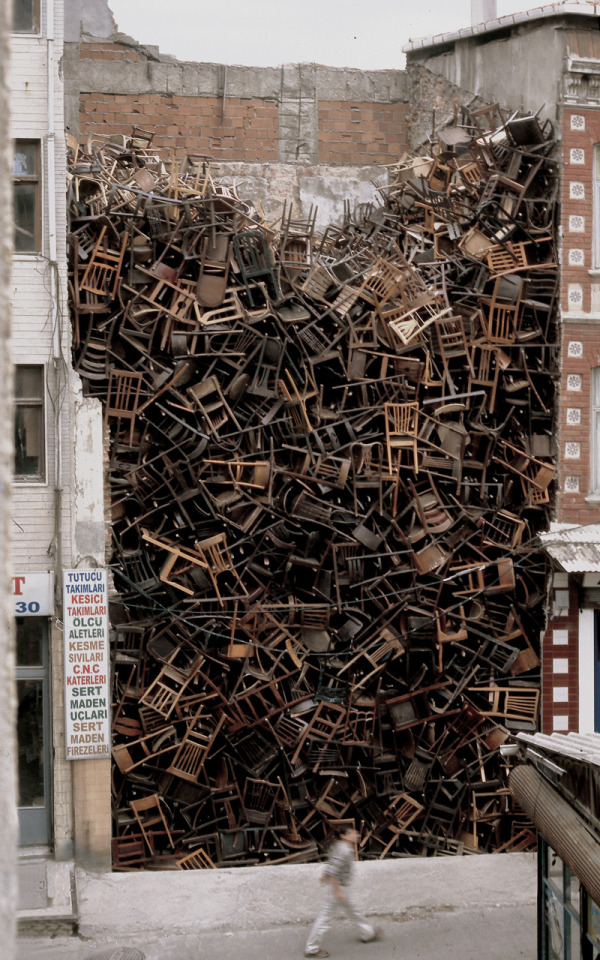
Doris Salecedo is a Colombian Visual artist and Sculptor. “her work is influenced by her experiences of life in Colombia, and is generally composed of commonplace items such as wooden furniture, clothing, concrete, grass and rose petals.”
She is known for her installation work ‘Chairs’ which consists of hundreds of wooden chairs arranged at random in an empty space between two buildings.
I am highly interested. in the use of repetition, proximity, volume and chaos within this piece.
0 notes
Text
sketch up





I modelled the site and my proposed artwork in SketchUp.
0 notes
Text
week 11 presentation
I chose this site because of the structure of the island in the waterhole, and how it seems to form an island out of roots, as well as the abundance of birds and other wildlife sharing the site for their habitats.
I wanted to create a reference to the form of the ibis nests within the trees, and create a form coming out of the water alongside ibis island.
I intend for this piece to be fairly ephemeral, as I would imagine that the birds could take twigs and materials from the structure in order to build their own nests, and that the weather would slowly deteriorate the structure.
I don’t plan on using any adhesives within the piece, instead I will just arrange everything together until it stays.
Sharing twigs is a key part of the white Ibis’s mating ritual.
Originally wanted my piece to just be made of wire, however, when revisiting the site I decided it would be more effective to incorporate sticks from the site into the work as well, to show a combination of elements.
When creating my model I used the sticks taken from the site as well as pre-used metal, wire and chain from within the workshop, that would work together to create a nest like shape.
Nests on top would reference ibis nests and also perches for the cormorants, while the bottom areas would provide ’shelter’ and perches for the moorhens, especially the baby ones that are coming out in spring. ]
I also imaging that the structure below the water would be able to support the growth of vegetation and organisms below the surface of the water which would support the ecosystem and provide a food source for the fish and birds in the area.
I wanted to incorporate colour into the work to link to the introduced bougainvillea which is now a significant part of that area as it is so big and bright
Initially coloured yarn
Now thinking a branch
ephemeral
colour will slowly fade
turn into twig and be used by the wildlife
0 notes
Text
presentation feedback/questions
How long will the work last? Is this significant? How would the material react with the environment?
I don’t plan on using any adhesive on my work, instead I am just fitting all of the elements together until it forms a nest like structure. Because of this I think that the work would be quite ephemeral, and break down into the environment fairly quickly.
The work is made up of both ‘organic’ and processed materials, which would each react differently within the environment. I have used sticks taken from the site within the work, as well as pre-used metal wire from the workshop. The sticks would have no dramatic effect on the environment as they were originally found within the environment, however the metal wire would oxidise in the water, which would affect the ecosystem.
I have also thought about adding in a colourful element to link with the introduced bougainvillea plants that bring in bright colour to the area, which I would incorporate using colourful yarn or fibre, but I don’t want to incorporate more materials that would negatively affect the environment.
I am considering incorporating bougainvillea branches into the nest itself which will start as green and pink lush branches, but slowly die off and turn to twigs that will form part of the nest, and can be taken by the birds to use within their nests.
How does this work reflect the indigenous significance of the area?
This site has always been a significant site for wildlife and vegetation. I am wanting to reference the symbiotic nature of the ecosystem, similar to that of the indigenous people’s interactions with the land and wildlife.
What materials would make sense to use within the structure?
Wire? metal? considering the use of colour throughout the work somehow. Naturally dyed fabric or fibre (dyed using vegetation taken from within the site, such as bougainvillea).
“the piece would be constantly shifting and changing” - something said in discussion of a different work, however, the interaction of the environment and the wildlife would be constantly changing the work.
0 notes
Text
Richard Deacon
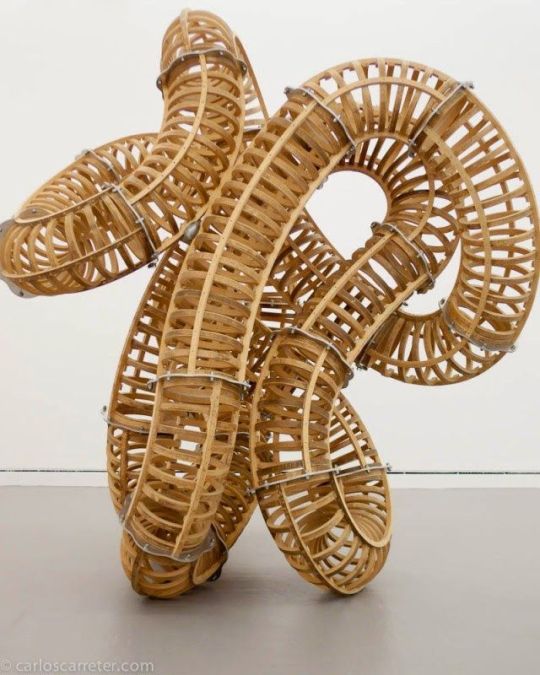
Richard Deacon is an English Abstract Sculptor.
As seen is his work pictured above, he creates works that have volume through the use of repetition, and proximity of linear form. His works have an intriguing sense of movement and flow.
0 notes
Text
photoshop second iteration
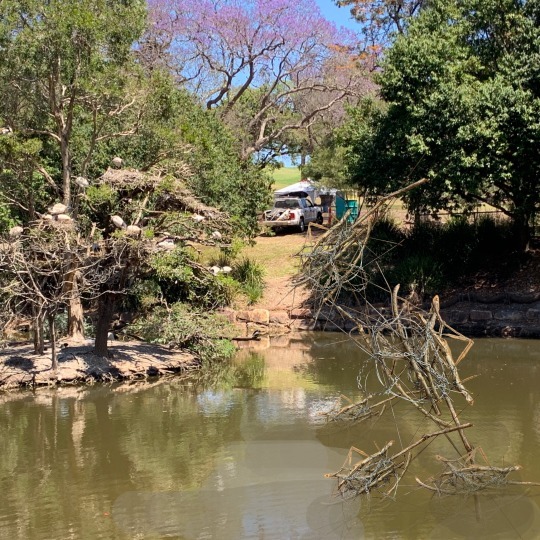
This is my second iteration of a photoshop mockup. I added in more elements, focusing mainly on structures protruding out of the water.
At this point I think that the entire structure needs to be denser as it would not be able to stand up in this form.
Additionally, I am wanting to add in a coloured element, most likely in the form of Bougainvillea branches, which is something that I will need to consider and revisit within this mockup.
0 notes
Text
bougainvillea
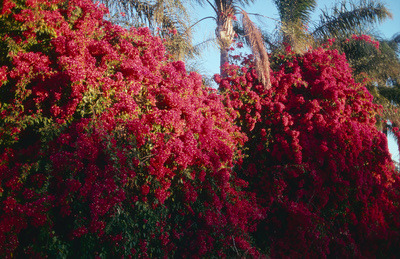
I am interested in incorporating Bougainvillea into my work, as although it is not native to the area, this incorporated species has become a significant part of the site today, as it provides a large patch of bright colour that stands out in a predominantly green environment.
My initial idea was to incorporate coloured fibre into the piece, however I am hesitant to incorporate more processed materials into the piece as It would have a negative impact on the environment.
To combat this, I am considering incorporating an actual branch of bougainvillea into the nest. - This would begin as a bright and colourful element within the nest, but would slowly die and dry out to create a twig, which will maintain the integrity of the nest.
0 notes
Text
photoshop mockup
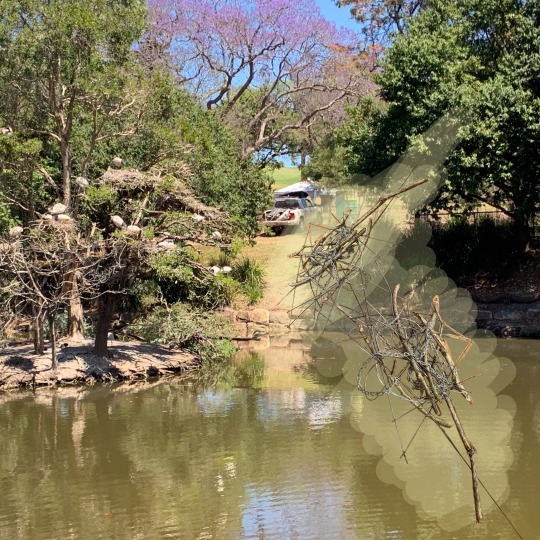
This is a very quick mockup of my Module using Procreate on my iPad. I have taken a photo of my module, and worked to remove most of the background and have placed it into an image of my site. I duplicated the image of the module to build onto the structure and provide a better idea of what I am imagining within the site.
I also added in a semi-opaque coloured Layer behind the module to help it stand out against the background and be easier to see.
0 notes
Text
Module
This is my Module for my site-specific installation. I have chosen to make one of the nests out of used steel wire, chain and wood taken from the site. I plan on duplicating this in photoshop in order to construct my final installation.
When creating this, I simply began to arrange the wire and sticks until they eventually held themselves together, much like a birds nest would. I think that it needs to have a bit more density too it, as well as some sort of coloured element, however I believe I can add this in later in photoshop.

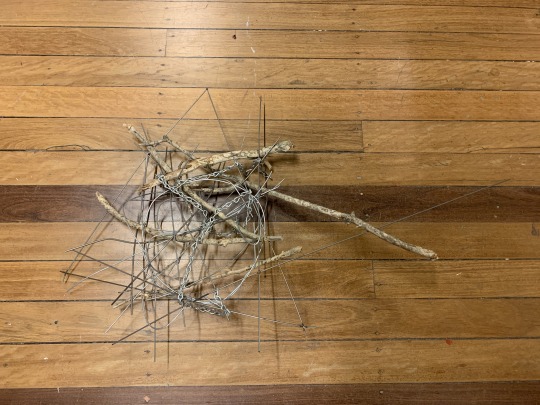
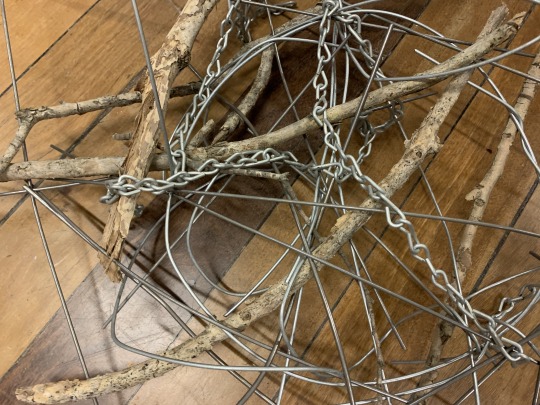
0 notes
Text
David Smith
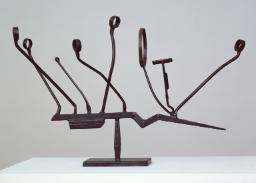
David Smith was an American Abstract expressionist and sculptor. According to Tate Modern, he was known for creating large steel abstract geometric sculptures., considered one of the greatest American Sculptors of the 20th Century.
https://www.tate.org.uk/art/artists/david-smith-1953
I have been interested in seeing the ways in which different artist utilise line in their work.
David Smiths work is informed by cubism, surrealism and constructivism.
0 notes
Text
Presentation notes
First presentation notes
Interested in all the different birds living in the area
How they all inhabit the same space together (coexisting)
All the babies that come out in the springtime
Took great inspiration from the formation of the tree island
Thinking of using metal in combination with sticks, as well as woven or crocheted elements with neutral coloured twine (or bright coloured yarn to reference the bougainvillea).
Feedback notes
Research the different birds + habitats.
Nest drifted away
Became a habitat for other wildlife
Natural vs unnatural
Nature/culture divide
Post natural
Consider a new term
Disruption/intervention
How habitat has changes based on human intervention
Separation between ourselves and nature
What is okay to put into nature?
Making a work that is usable to the animals in the site
how individual nests are made
creating representational forms of birds using materials
Brisbane backyard birds
How do the different birds interact with environment
How placing things in waterway affects flow
Man made objects becoming a part of a birds habitat
Intervention in waterway
Relationships between different birds
0 notes
Text
Eva Rothschild
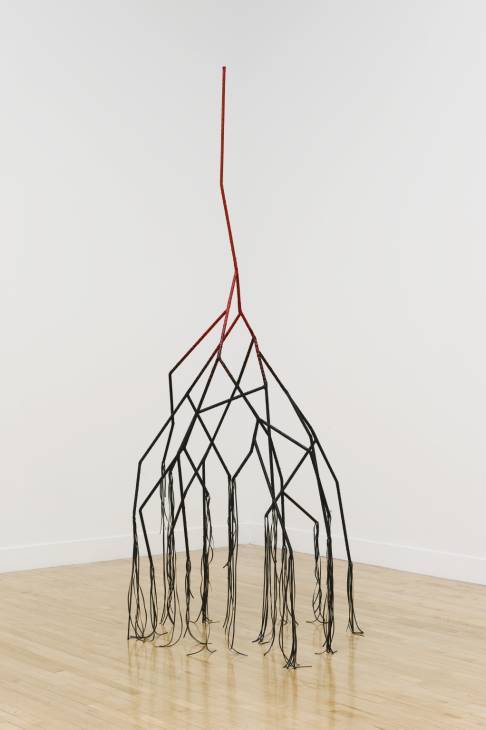
Eva Rothschild is an Irish Artist.
She works predominantly with sculpture, utilising a range of materials such as aluminium, jesmonite, leather, fabric and perspex.
According to Tate Modern, Rothschild’s work references the art movements of the 1960s and 70s as well as “contemporary aesthetics of protest and spirituality”.
https://www.tate.org.uk/art/artists/eva-rothschild-4734
I am very interested in Rothschild’s use of line and tension in her work ‘Knock Knock’ (2005). The way she has manipulated her material to resemble tree roots is something that I would be intrigued to incorporate within my work.
0 notes
Text
Eva Hesse
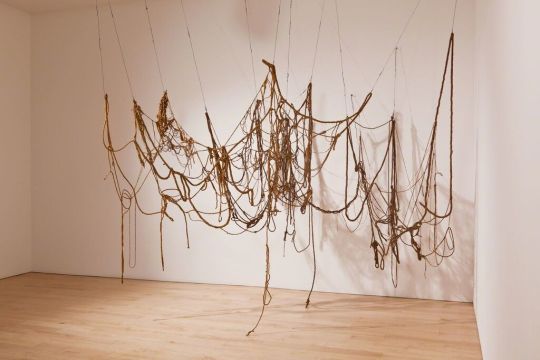
Eva Hesse was a German/American Sculptor known for her “pioneering” work with materials such as latex, fibreglass and plastic.
Her untitled work above shows an excellent use of line and texture to create a sense of volume. I am intrigued by the sense of chaos created through the random arrangement of materials within the work.
Hesse was very fond of using unconventional materials to create her work and was seen as a key part of the “post minimal” art movement.
https://www.britannica.com/biography/Eva-Hesse
0 notes
Text
birds/wildlife seen at the site
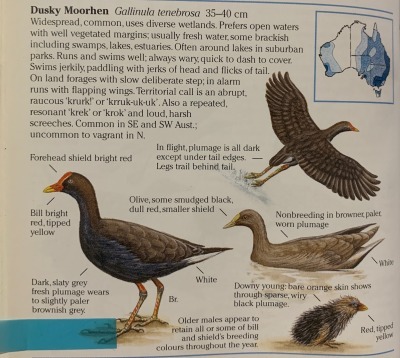
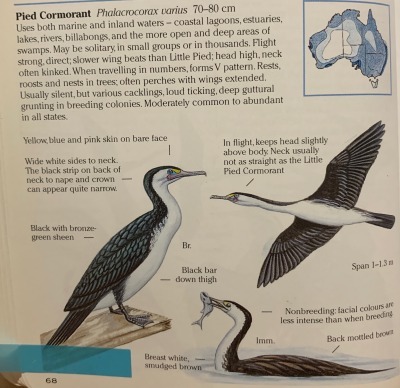
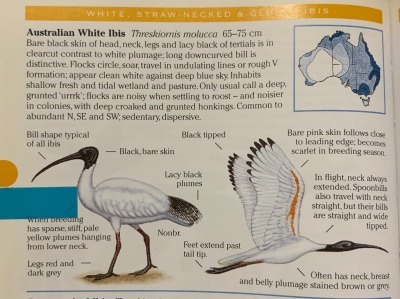
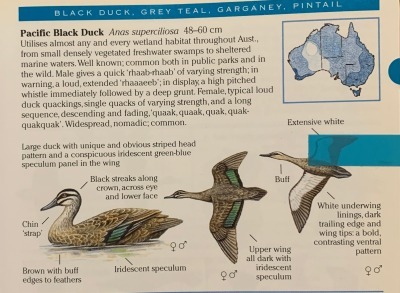
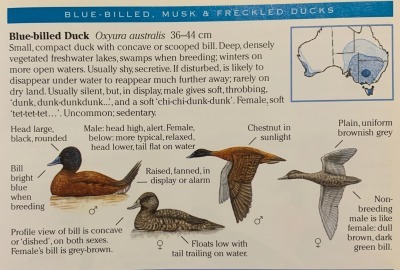
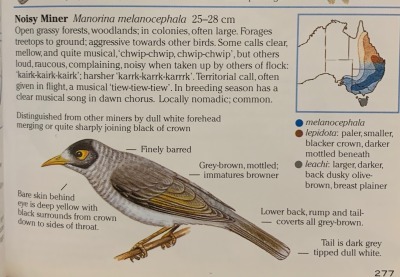
This is some information on some of the birds I have seen frequently on and around Ibis Island.
Duck (either a Pacific Black Duck or a Blue-Billed Duck maybe) - from my observations, it seems that the ducks living in this area keep mainly in the water and on the outer banks of the lagoon, seeming to stay away from the island itself.
Australian White Ibis - The ibis have build their habitat on the island and in some nearby trees. As I have previously mentioned, their habitat is made up of huge nests that rest on top of branches.
Dusky Moorhen - When visiting this site in early spring, I was lucky enough to see all of the baby moorhens interacting with the site. while observing them I noticed that they spent a lot of time along the edge of the island, hiding in the roots, and perching themselves on branches that were either hanging down Into the water, or protruding up out of the water.
Noisy Minor - these were everywhere, the way they often are.
Pied Cormorant - Cormorants can be seen nesting high up in the tree, with some perched in trees around the lagoon.
I also spotted a number of water dragons, as well as fish and insects living in the water.
1 note
·
View note
Text
Initial sketches and plans
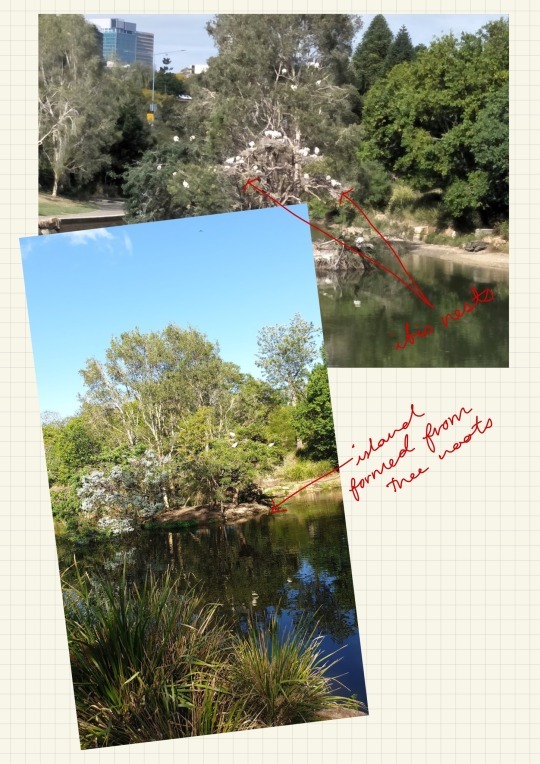

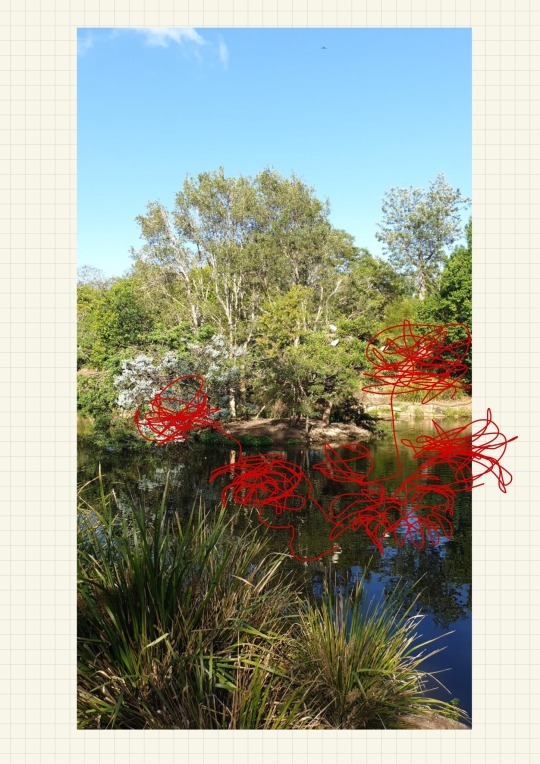
These are some initial ideas that I have sketched out on how I want to approach this work. As seen in the last image, I want to create this tree like structure using many pieces of wire and perhaps some other materials. I want my structure to have a strong and clear structural link to the nests in the trees, as well as a nest that has fallen into the water and is now a habit for life within the lagoon.
0 notes
